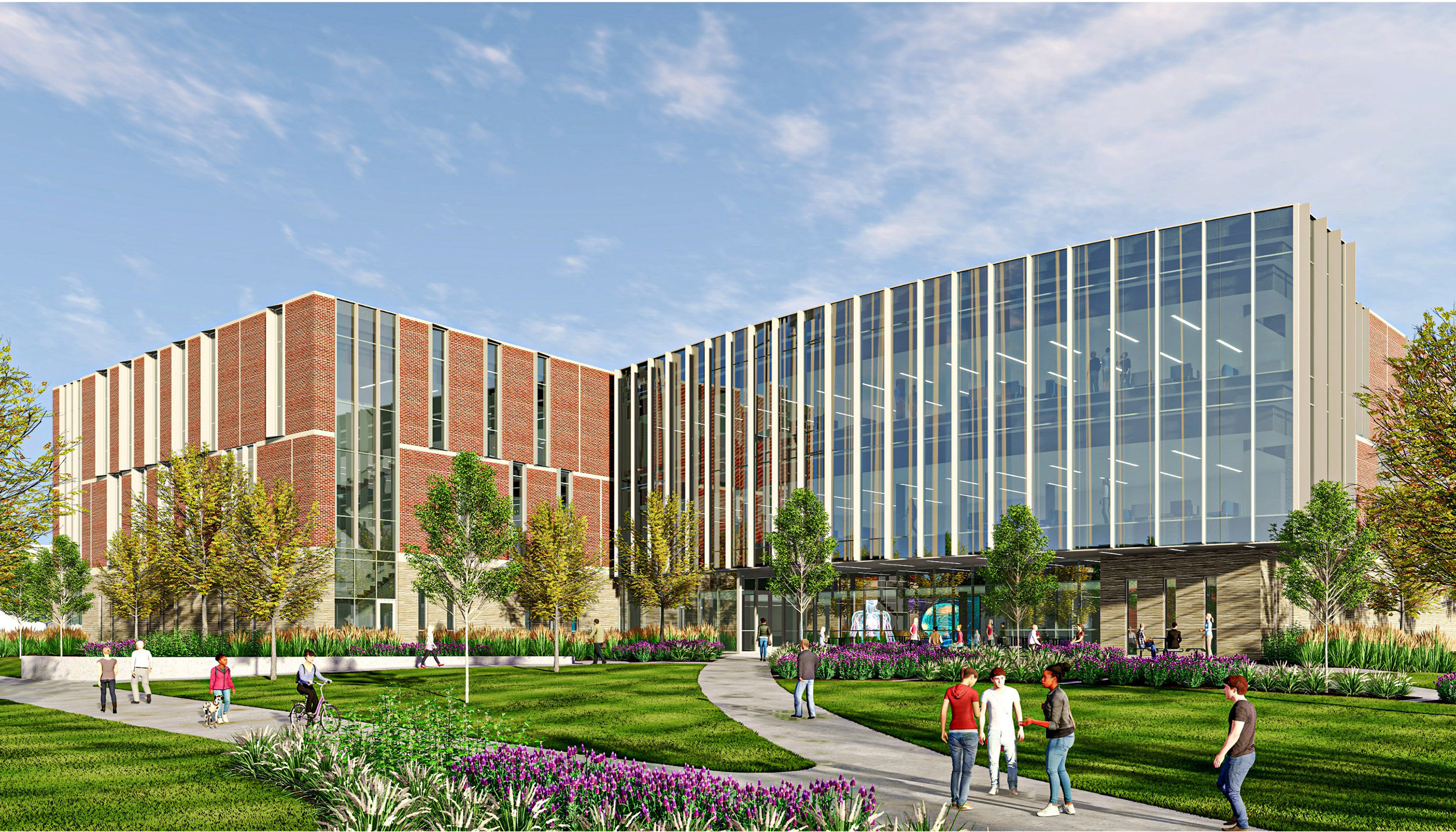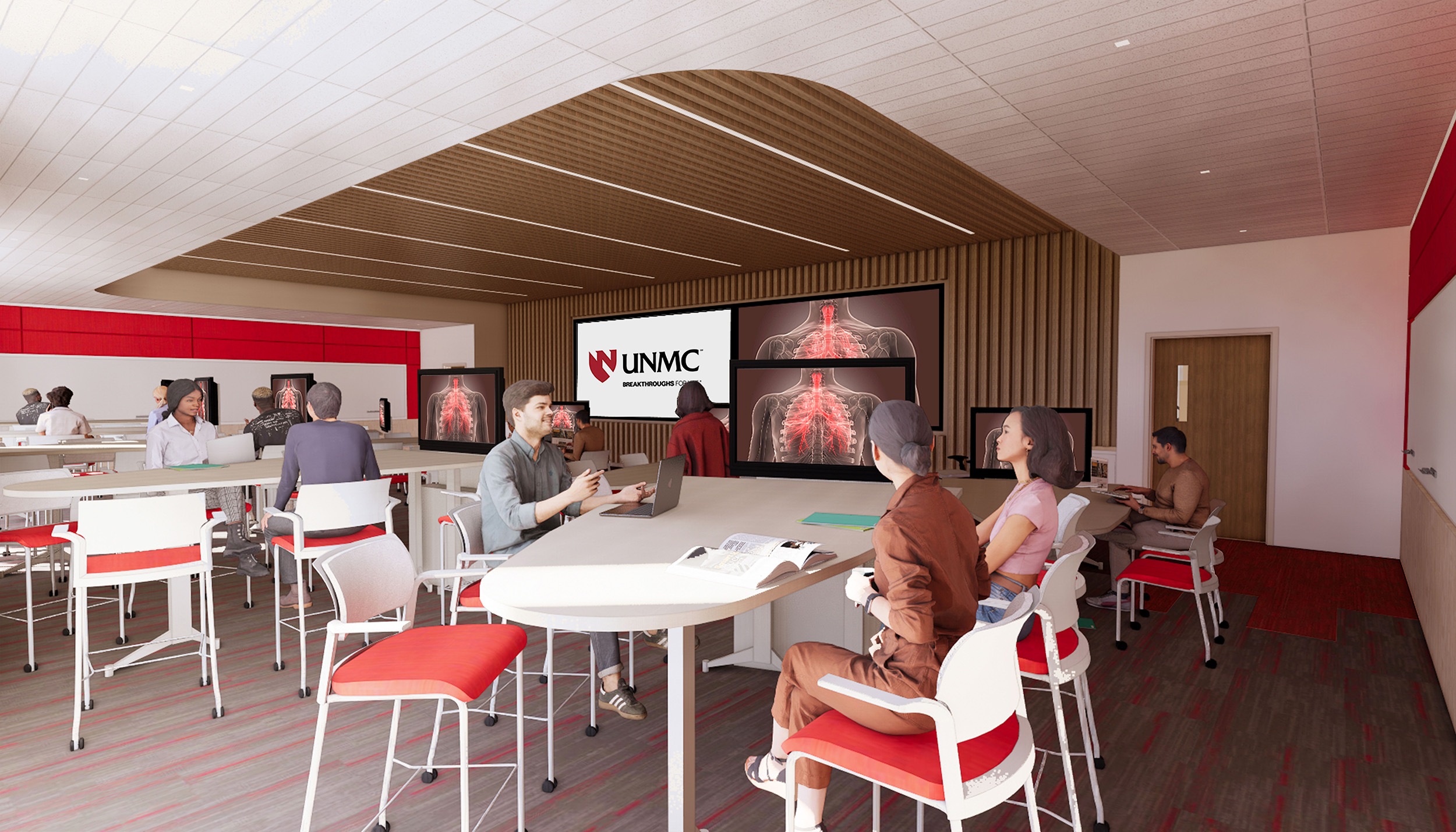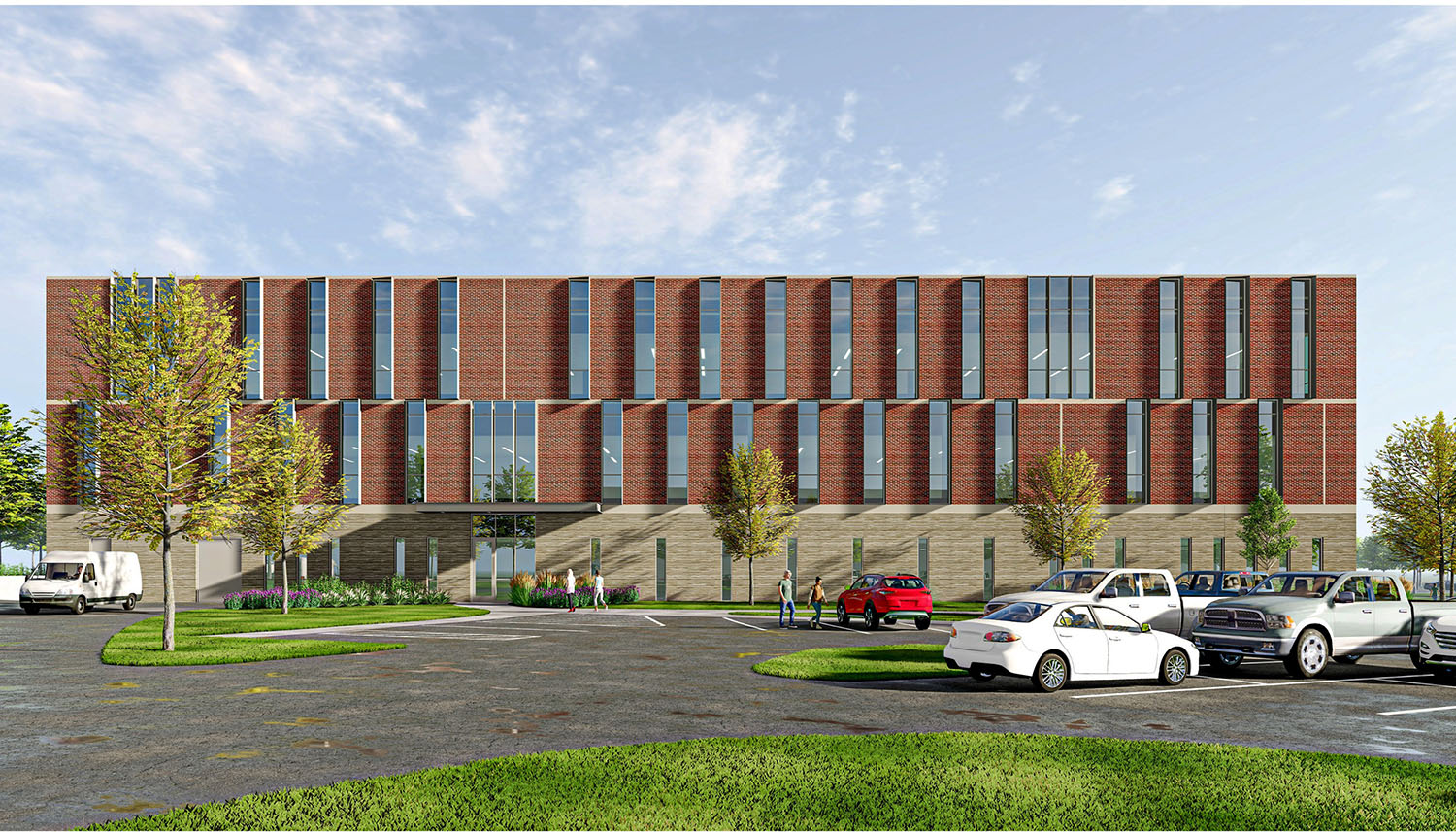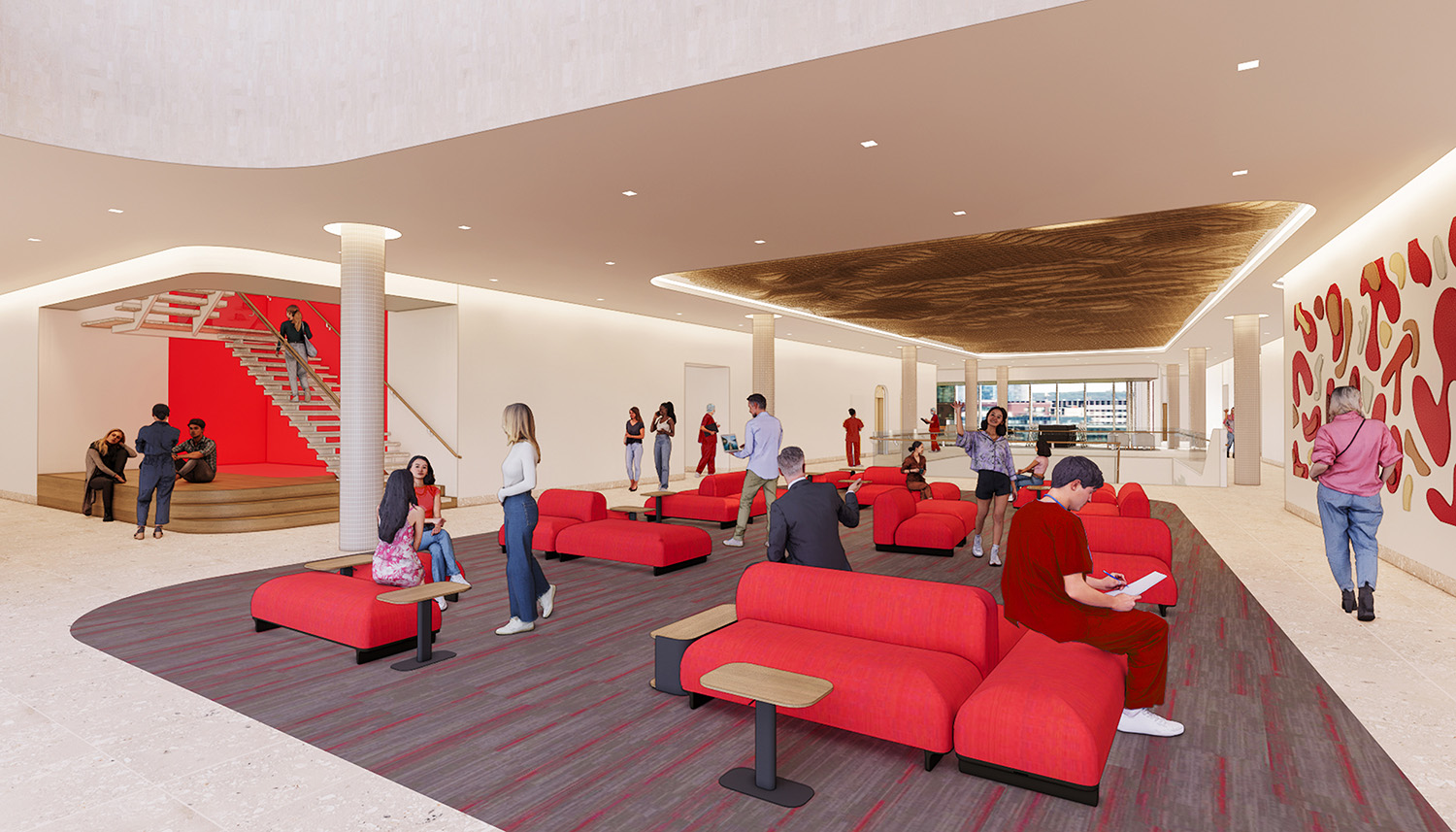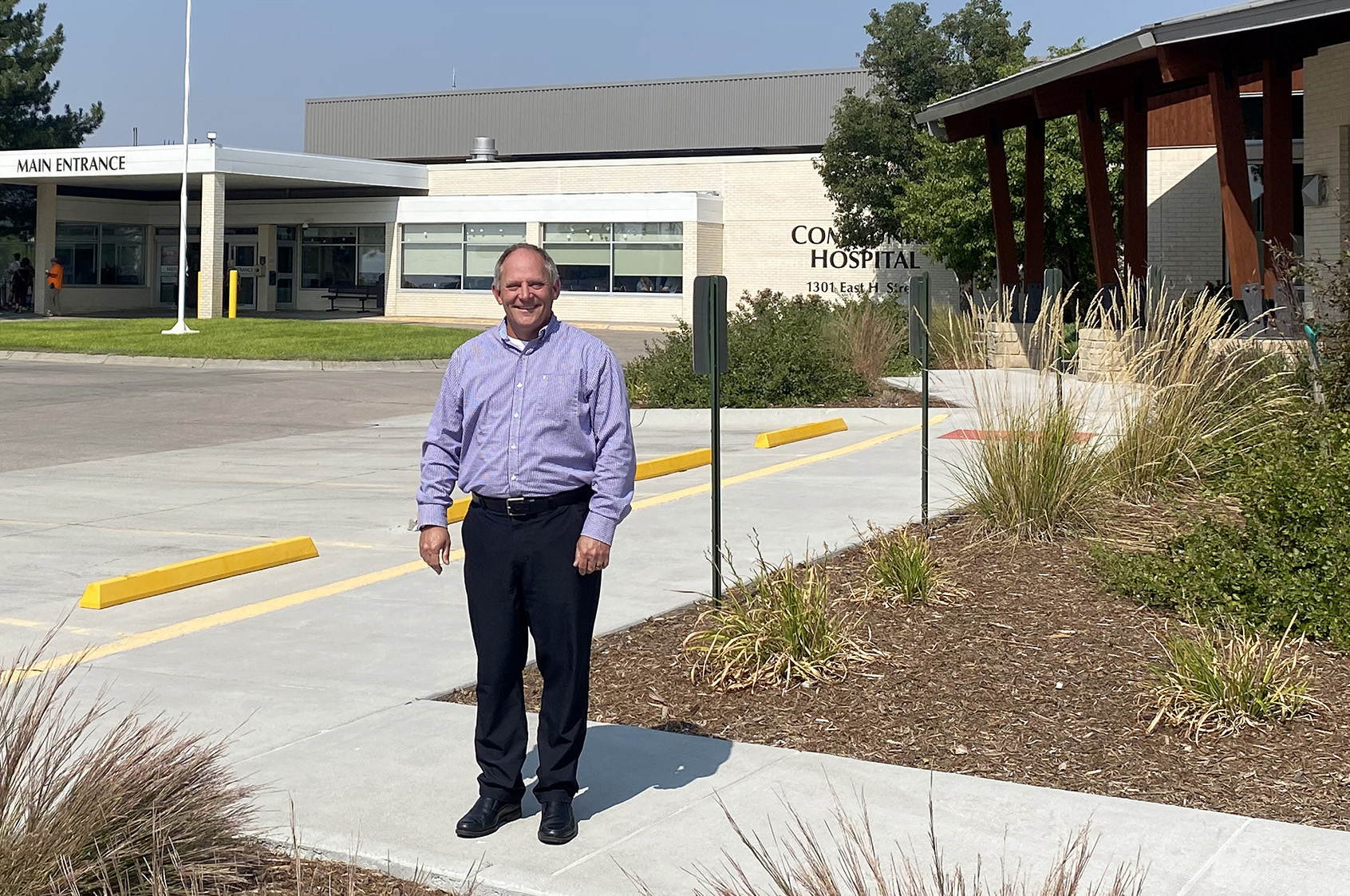
By TYLER ELLYSON
UNK Communications
KEARNEY – The UNK-UNMC Rural Health Education Building isn’t expected to open until early 2026 on the University of Nebraska at Kearney campus, but officials at Community Hospital in McCook are already preparing for its impact.
Troy Bruntz, the hospital’s president and CEO, wants to be ready for a potential influx of people looking to study, train and work in rural Nebraska. That’s why he’s working on a plan to build apartment-style housing for students who will complete clinical rotations at the hospital.
If these future doctors, nurses, pharmacists and therapists can experience rural health care and the community together, he’s hoping at least a few of them will return after receiving their professional degrees.
“All of them aren’t going to say, ‘This is great. I love McCook. I can’t wait to come back,’” Bruntz admits. “But if we can get one or two out of every 20 to say that, that’s a huge difference.”
In his 21st year with the critical access hospital, and seventh in the top position, Bruntz has seen firsthand how difficult it’s become to recruit health care professionals to places like McCook, population 7,300.
“It gets harder and harder every year, whether it’s MDs, nurses, CRNAs, pharmacists, anything,” he said. “In some cases, you might be one resignation or one retirement away from losing an entire service.”
“Specialists are an even bigger issue,” he added. “Ear, nose and throat doctors, you can probably count on one hand how many there are west of York, and that includes Kearney and Grand Island. Medical oncology is basically nonexistent out here. People end up traveling ridiculous distances for something you shouldn’t have to travel for. If you have a cancer diagnosis and you’re going through chemotherapy and radiation, you shouldn’t have to travel an hour, two hours, three hours to an appointment.”
According to statistics from the University of Nebraska Medical Center, every Nebraska county except Douglas and Lancaster is designated as a shortage area for at least one type of primary care. Thirteen counties don’t have a primary care physician practicing there; 25 are designated as shortage areas for family physicians; and only 49 have an active OB-GYN. There’s high demand for more dentists, mental health practitioners, nurses, occupational therapists and speech-language pathologists, too.
The solution to this problem, Bruntz and many others believe, is to train health care providers in the communities that need them the most.
“There are a lot of people who want rural, they’re from rural, but they end up going to college in a community like Omaha and they never really get out of there,” he said. “But if they can train and do their schooling in a community like Kearney, there’s a lot better chance that we could hold onto them in a rural community.”
University of Nebraska administrators agree.
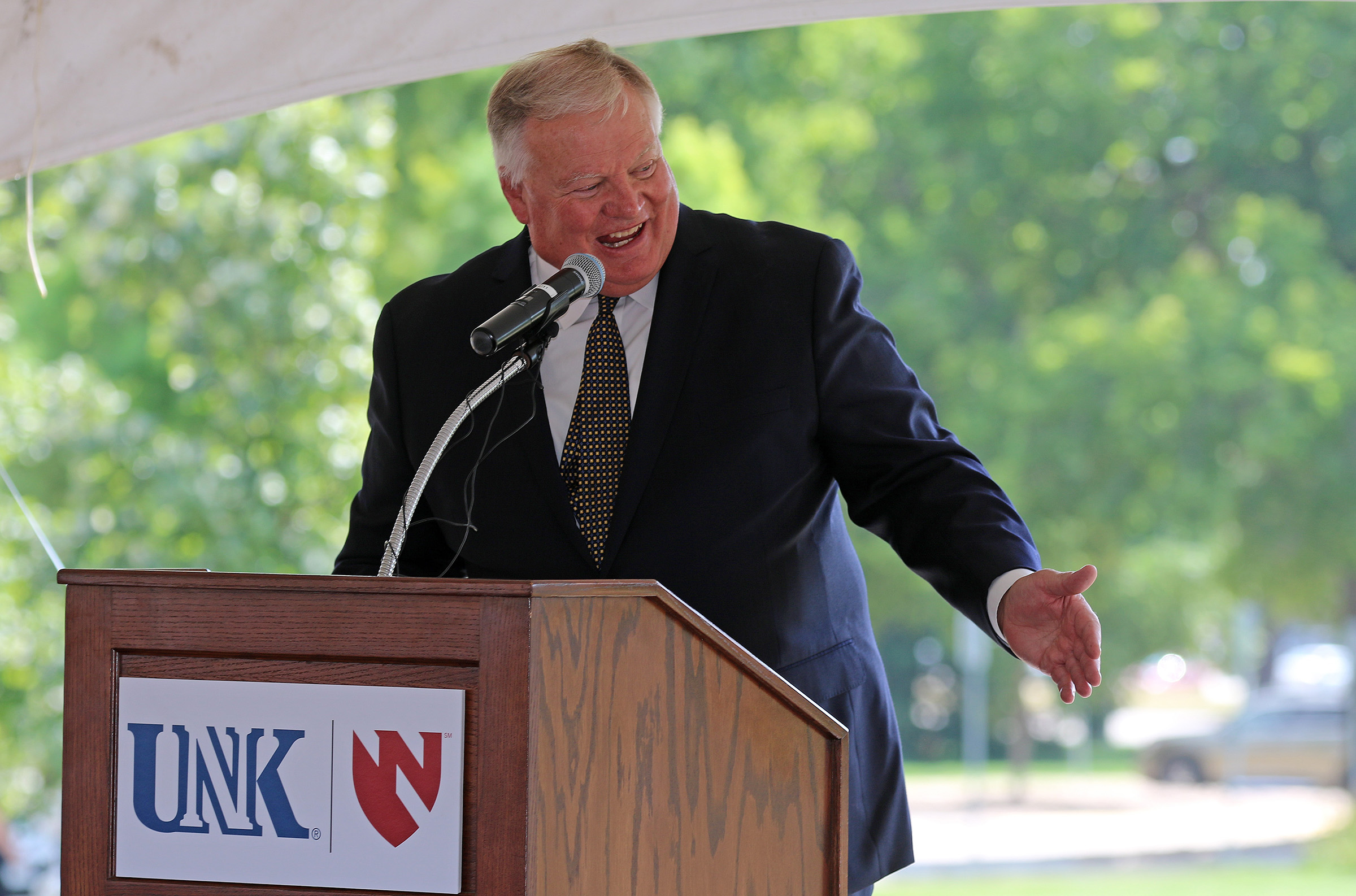
HISTORIC PROJECT
A partnership between UNK and UNMC, the Rural Health Education Building addresses urgent needs in the state’s health care workforce by allowing more students to study and train in rural Nebraska.
The $95 million, 110,000-square-foot facility will feature state-of-the-art classrooms, extensive simulation and clinical skills laboratories and simulated primary care spaces. UNMC will operate the building on the UNK campus, extending the impact of its world-class health education and supporting economic vitality in communities throughout the region.
Calling it a “historic collaboration,” UNK Chancellor Doug Kristensen said the project will “change Nebraska like no other.”
“I’ll guarantee you, in 10 years, in 20 years, you’re going to look back and you’re going to go, ‘I was there the day they broke ground for that building, and look what it’s done for Nebraska and look what it’s done for our communities and our health care,’” he told a crowd of more than 300 people during last week’s groundbreaking ceremony. “ … I really hope you all appreciate how important this point in history is.”
UNK and UNMC opened a $19 million Health Science Education Complex on UNK’s west campus in 2015, and that facility quickly filled. More than 300 students are currently pursuing degrees there in professional programs such as cardiovascular interventional technology, diagnostic medical sonography, magnetic resonance imaging, medical laboratory science, nursing, occupational therapy, physical therapy, physician assistant and radiography.
In addition to their on-campus education, many of these students complete clinicals in the same communities they’ll serve after graduation. About 85% of the students who graduate from these programs start their careers in rural Nebraska.
Located just north of the Health Science Education Complex, the Rural Health Education Building amplifies that highly successful partnership, creating a hub for health education in central and western Nebraska.
The second facility allows UNMC to expand the presence of its allied health and nursing programs in Kearney while launching new programs to train physicians, pharmacists and public health professionals here. When it’s complete, the number of UNMC health care students training in Kearney will double, bringing the total to more than 600.
“If we’re going to be successful, this is the type of thing we’re going to have to do,” Bruntz said of the project. “It’s not going to work any other way. We can’t expect to keep doing what we’re doing and somehow deal with the fact that we have fewer and fewer specialists and medical doctors in rural Nebraska each and every year.”
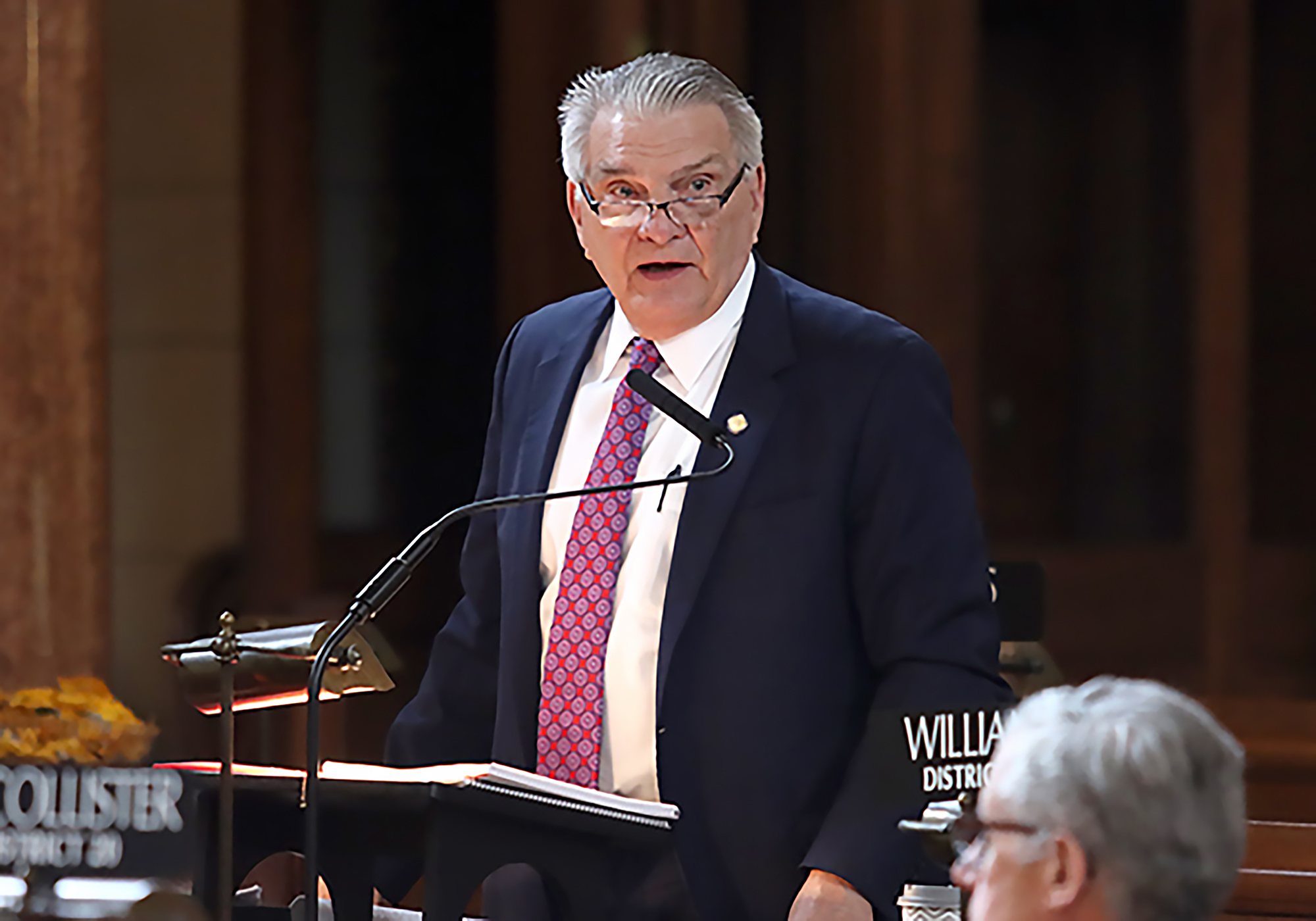
WORKING TOGETHER
Like Bruntz, former state Sen. John Stinner understands the health care challenges many rural communities face. He heard about them all the time while representing District 48 in the Nebraska Panhandle.
“As we take a look at what our needs are in rural Nebraska, there are counties without doctors. We’re short all across the board, whether it’s social workers, psychiatrists, mental health practitioners, etc. And our hospitals continue to have huge turnover,” he said. “No matter where you go in small-town Nebraska, you’ll find a deficiency in some kind of health care service.”
He views the Rural Health Education Building as a “catalyst” for the state, which is why it gained his immediate support when he was chairman of the Legislature’s Appropriations Committee.
“This joint venture, with UNMC putting its mark at UNK, is absolutely huge for the state,” Stinner said. “It’s just going to be transformative. It’s probably one of the best things that I did in the Legislature.”
A public-private partnership, the project received support from numerous sources, including donors such as the William and Ruth Scott Family Foundation, Walter Scott Family Foundation, Peter Kiewit Foundation, Union Pacific Foundation, Ron and Carol Cope Foundation, Pinnacle Bancorp, Dinsdale Family, Tom and Mary Henning and Paul and Linda Younes.
The Nebraska Legislature allocated $60 million in federal American Rescue Plan funding for capital construction and iEXCEL technology startup costs, plus sustainable operational funds to support faculty and staff, and $1.5 million will come from Central Community College.
The city of Kearney committed $5 million – one of its largest-ever contributions to this type of project. When fully operational, the Rural Health Education Building and existing Health Science Education Complex will support about 240 local jobs and have an annual economic impact estimated at $34.5 million.
“It’s not just about jobs,” Kearney City Manager Mike Morgan said. “Jobs are easy to calculate. More importantly, it’s about people and having access to health care. We live in a great community, and the university is very important to us and our quality of life. We appreciate the opportunity to work together to do what’s best for the Kearney area.”
University of Nebraska Regent Paul Kenney of Amherst called it “almost unheard of” to have a project with this many partners and resources involved. That speaks to its importance.
“We all recognize that the Rural Health Education Building is going to make the state of Nebraska and this region of the country a special place,” he said. “I think about how we’re going to make life better for my grandchildren, their children, and their grandchildren.”
